#ScienceDaily
Text

Compared to robots, human bodies are flexible, capable of fine movements, and can convert energy efficiently into movement. Drawing inspiration from human gait, researchers from Japan crafted a two-legged biohybrid robot by combining muscle tissues and artificial materials. Publishing on January 26 in the journal Matter, this method allows the robot to walk and pivot."
Research on biohybrid robots, which are a fusion of biology and mechanics, is recently attracting attention as a new field of robotics featuring biological function," says corresponding author Shoji Takeuchi of the University of Tokyo, Japan
"Using muscle as actuators allows us to build a compact robot and achieve efficient, silent movements with a soft touch."The research team's two-legged robot, an innovative bipedal design, builds on the legacy of biohybrid robots that take advantage of muscles.
Muscle tissues have driven biohybrid robots to crawl and swim straight forward and make turns -- but not sharp ones.
Yet, being able to pivot and make sharp turns is an essential feature for robots to avoid obstacles.
To build a nimbler robot with fine and delicate movements, the researchers designed a biohybrid robot that mimics human gait and operates in water.
The robot has a foam buoy top and weighted legs to help it stand straight underwater.
The skeleton of the robot is mainly made from silicone rubber that can bend and flex to conform to muscle movements.
The researchers then attached strips of lab-grown skeletal muscle tissues to the silicone rubber and each leg.
When the researchers zapped the muscle tissue with electricity, the muscle contracted, lifting the leg up. The heel of the leg then landed forward when the electricity dissipated.
By alternating the electric stimulation between the left and right leg every 5 seconds, the biohybrid robot successfully "walked" at the speed of 5.4 mm/min (0.002 mph). To turn, researchers repeatedly zapped the right leg every 5 seconds while the left leg served as an anchor.
The robot made a 90-degree left turn in 62 seconds. The findings showed that the muscle-driven bipedal robot can walk, stop, and make fine-tuned turning motions.
"Currently, we are manually moving a pair of electrodes to apply an electric field individually to the legs, which takes time," says Takeuchi.
"In the future, by integrating the electrodes into the robot, we expect to increase the speed more efficiently."
#sciencedaily#science#robotics#Biohybrid robotics#3d printing#Lab grown muscular tissue#Cultured muscular tissue
9 notes
·
View notes
Text
𝐓𝐈𝐌𝐄𝐋𝐈𝐍𝐄: 𝐇𝐢𝐬𝐭𝐨𝐫𝐢𝐜𝐚𝐥 𝐥𝐚𝐧𝐝𝐦𝐚𝐫𝐤𝐬 𝐢𝐧 𝐨𝐮𝐫 𝐮𝐧𝐝𝐞𝐫𝐬𝐭𝐚𝐧𝐝𝐢𝐧𝐠 𝐨𝐟 𝐩𝐫𝐨𝐭𝐞𝐢𝐧𝐬
1838: the name “protein” (from the Greek proteios, “primary”) was suggested by Berzelius for the complex nitrogen-rich substance found in the cells of all animals and plants.
1819–1904: Most of the 20 common amino acids found in proteins were discovered.
1864: Hoppe-Seyler crystallized, and named the protein hemoglobin.
1894: Fischer proposed a lock-and-key analogy for enzyme-substrate interactions.
1897: Buchner and Buchner showed that cell-free extracts of yeast can ferment sucrose to form carbon dioxide and ethanol, thereby laying the foundations of enzymology.
1926: Sumner crystallized urease in pure form, demonstrating that proteins could possess the catalytic activity of enzymes; Svedberg developed the first analytical ultracentrifuge and used it to estimate the correct molecular weight of hemoglobin.
1933: Tiselius introduced electrophoresis for separating proteins in solution.
1934: Bernal and Crowfoot presented the first detailed X-ray diffraction patterns of a protein, obtained from crystals of the enzyme pepsin.
1942: Martin and Synge developed chromatography, a technique now widely used to separate proteins.
1951: Pauling and Corey proposed the structure of a helical conformation of a chain of amino acids—the α-helix—and the structure of the β-sheet, both of which were later found in many proteins.
1955: Sanger obtained the amino acid sequence of insulin, the first protein whose amino acid sequence was determined.
1956: Ingram produced the first protein fingerprints, showing that the difference between sickle-cell hemoglobin and normal hemoglobin is due to a change in single amino acid.
1960: Kendrew described the first detailed three-dimensional structure of a protein (sperm whale myoglobin) to a resolution of 0.2 nm, and perutz proposed a lower-resolution structure for hemoglobin.
1963: Monod, Jacob, and Changeux recognized that many enzymes are regulated through allosteric changes in their conformation.
For more read: Essential Cell Biology
90 notes
·
View notes
Text
A hotter ocean is a hungrier ocean -- at least as far as fish predators are concerned. In a new field study published online June 9 in Science, Smithsonian scientists discovered predator impacts in the Atlantic and Pacific peak at higher temperatures. The effects cascade down to transform other life in the ocean, potentially disrupting balances that have existed for millennia.
"It's taken thousands of years to get to this state, and then suddenly we're ramping up the temperature at a much higher rate," said Gail Ashton, lead author of the report and marine biologist with the Smithsonian Environmental Research Center (SERC). "And we don't really know the implications of that temperature increase."
#tidalpunk#ocean#Solarpunk#climate crisis#climate change#climate chaos#sciencedaily#latest science news sciencedaily#Gail Ashton
32 notes
·
View notes
Text
How to Keep Your Ears Clean
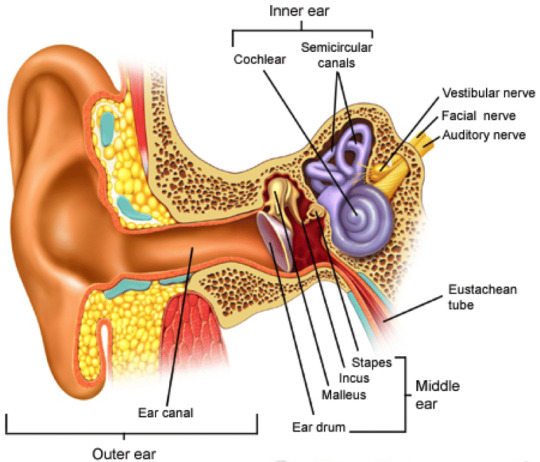
Cotton swabs are recommended by some, while ear candles are recommended by others. Maybe you’re one of those people who believes that you should never clean your ears.
Putting anything inside your ear is a horrible idea, which is about the only thing doctors agree on. Your ears normally clean themselves and don’t require any special attention. Cleaning them is only necessary to soften or eliminate earwax from the outside of your ear canals. And you’ll need to know how to do it wisely if you’re going to accomplish it.
⭐ Why Do Your Ears Produce Wax?
The substance called cerumen, sometimes known as earwax, is the reason we feel compelled to clean our ears. It’s natural for your body to create it, and it aids in the protection and lubrication of your ears. Your ears would be uncomfortable and dry if you didn’t have earwax.
It even has antibacterial characteristics, so your ears will clean themselves. Earwax acts as a filter for your ears, keeping hazardous substances such as dirt and dust out while trapping them so they don’t get too deep within.
You can help transfer old earwax out of the ear canal to the ear entrance by chewing and moving your jaw. It frequently dries up and falls out there. Earwax, on the other hand, is created in the outer region of your ear canal, not in the deep part.
So the only reason you have an earwax blockage against your eardrum is that you tried to clean your ears with a cotton swab — or something similar — and pushed the wax further in.
Other dangerous complications can result from swabbing or inserting pointed things inside your ear:

01. Infection
02. An eardrum rupture is a condition in which the eardrum ruptures.
03. Hearing loss that is severe
⭐Is It Necessary to Clean Your Ears?
No, your ear canals shouldn’t need to be cleaned. However, if too much earwax builds up and causes symptoms or prevents your doctor from doing a full ear check, you may have cerumen impaction. This indicates that earwax has completely filled your ear canal, which can occur in either one or both ears.
⭐Cerumen impaction causes the following symptoms:
01. In your ear, you may have pain or a feeling of fullness.
02. Do you have the sensation that your ear is plugged?
03. Partial hearing loss that worsens over time
04. Tinnitus is a ringing in the ear.
05. Itching, drainage, or an odor emanating from your ear are all signs that 06. something is wrong.
07. Coughing
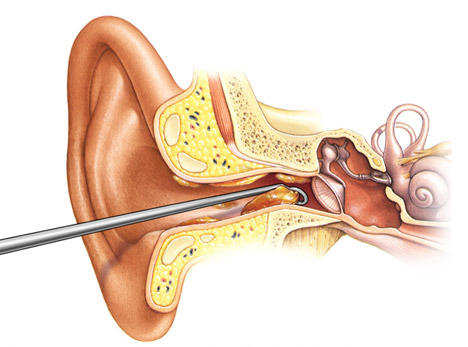
This type of earwax buildup is uncommon, although it does occur. However, if you’re suffering from any of the symptoms described above, don’t blame it on earwax. Make an appointment with your physician. They can examine your ears and determine the source of the problem. Your doctor can use a special gadget to look into your ear canal and remove any earwax with small devices, suction, or irrigation.
⭐How to Clean Your Ears and How Not to Clean Your Ears
You can gently wipe the outside of your ears if your problem isn’t serious but you feel like there’s too much earwax buildup. All you need is a washcloth. To soften the wax, you can apply a few drops of baby oil, hydrogen peroxide, mineral oil, or glycerin to your ear. Or An over-the-counter wax removal kit can be used.
Ear candles should not be used to clean your ears but instead for cotton swabs or other small or sharp things. According to studies, they are ineffective and might possibly cause damage. The FDA has discovered that these hollow candles, which are designed to be placed into the ear canal and lit at the exposed end, can cause burns and even penetrate the inside of the ear.
⭐Recommended Products — It’s not compulsory for you. it has listing for your easier only. Thank you!
👉❤️ Product 01 — Stainless Steel Earwax Tool Kit
👉❤️Product 02 — Ear Wax Removal Kit with Camera
👉❤️Product 03 — Ear Wash Refill Kit
👉❤️Product 04 — Ear Oil for Ear Infections
👉❤️Product 05 — Olive Oil Ear Wax Drops Softens Removes
👉❤️Product 06 — Organic Ear Oil for Ear Infections
👉❤️Product 07 — Baby Oil
👉❤️Product 08 — Ear wax removal kit
👉❤️Product 09 — Traditional Bamboo Ear Picks
👉❤️Product 10 —Ear Covers For Shower
👉❤️Product 11 — Ear Washer Disposable Tips
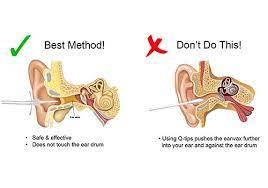
#ear cleaning#beauty tips#healthy life#skincare#covid 19#coronavirus#health#healthcare#health and wellness#nutrition#weight loss#ear wax removal#ear infection#sciencedaily#ear piercings#ear phones#ear muffs#health tips#beauty#hairstyle#beautiful#woman#modeling#beautiful model
16 notes
·
View notes
Text
Yellowstone's history of hydrothermal explosions over the past 14,000 years -- ScienceDaily
Yellowstone’s history of hydrothermal explosions over the past 14,000 years — ScienceDaily
While much of public attention on Yellowstone focuses on its potential to produce large supereruptions, the hazards that are much more likely to occur are smaller, violent hydrothermal explosions. Hydrothermal explosions occur when near-boiling water suddenly flashes into steam, releasing large amounts of energy. The energy release fractures the rock downward, often leaving behind a crater. The…

View On WordPress
#Explosions#Geology; Near-Earth Object Impacts; Oceanography; Mining; Early Climate; Fossils; Origin of Life; Anthropology#History#hydrothermal#ScienceDaily#Years#Yellowstones
8 notes
·
View notes
Text
Students who are nonbinary, female or in their second year of college are most affected by academic stress -- ScienceDaily
Students who are nonbinary, female or in their second year of college are most affected by academic stress — ScienceDaily
Academic stress takes a toll on the mental well-being of certain groups of college students more than others – a correlation further exacerbated by the COVID-19 pandemic, according to a Rutgers New Jersey Medical School study.
Published in the journal Frontiers in Psychology, researchers found a significant correlation between perceived academic stress and poor mental well-being in all the…

View On WordPress
2 notes
·
View notes
Text

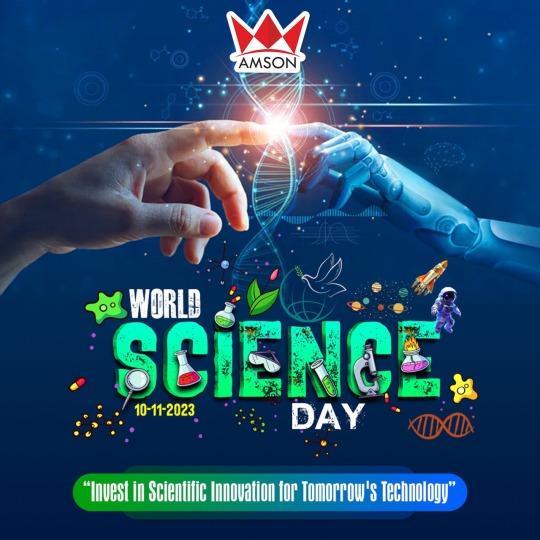
WORLD SCIENCE DAY
The science of today is the technology of tomorrow.
To promote your business using digital posters, we are providing free trials for 7 days
1 note
·
View note
Text
Computer models advancing science
Computer modeling has become a more and more important tool for science. We have seen it in Climatology for decades, as well as in a number of other fields. People who have a poor understanding of science, or who are trying to deny science, such as creationists and climate change deniers, will often claim that it isn’t really real science, but that is of course pure nonsense, as empirical…
View On WordPress
#Australopithecus afarensis#Cambridge University#Dr Ashleigh Wiseman#Evolution#Lucy#Royal Society Open Science#ScienceDaily
1 note
·
View note
Text
Without fully implementing net-zero pledges, the world will miss climate goals -- ScienceDaily
Without more legally binding and well-planned net-zero policies, the world is highly likely to miss key climate targets.
In the new study, led by Imperial College London and published today in Science, researchers ranked 90% of global net-zero greenhouse gas emissions pledges as providing low confidence in their full implementation.
The researchers recommend nations make their targets legally…
View On WordPress
0 notes
Text
'We don't typically see how our generosity cascades through the social network,' noted one of the researchers, 'to affect the lives of dozens or maybe hundreds of other people.'
"Humankind: A Hopeful History" - Rutger Bregman
#book quotes#humankind#rutger bregman#nonfiction#generosity#acts of kindness#social network#social impact#acts of kindness spread surprisingly easily: just a few people can make a difference#sciencedaily#university of california
1 note
·
View note
Text
Scientists have developed 'supramolecular ink,' a new 3D-printable OLED (organic light-emitting diode) material made of inexpensive, Earth-abundant elements instead of costly scarce metals. The advance could enable more affordable and environmentally sustainable OLED flat-panel displays as well as 3D-printable wearable technologies and lighting
"By replacing precious metals with Earth-abundant materials, our supramolecular ink technology could be a game changer for the OLED display industry," said principal investigator Peidong Yang, a faculty senior scientist in Berkeley Lab's Materials Sciences Division and professor of chemistry and materials science and engineering at UC Berkeley. "What's even more exciting is that the technology could also extend its reach to organic printable films for the fabrication of wearable devices as well as luminescent art and sculpture," he added
4 notes
·
View notes
Text
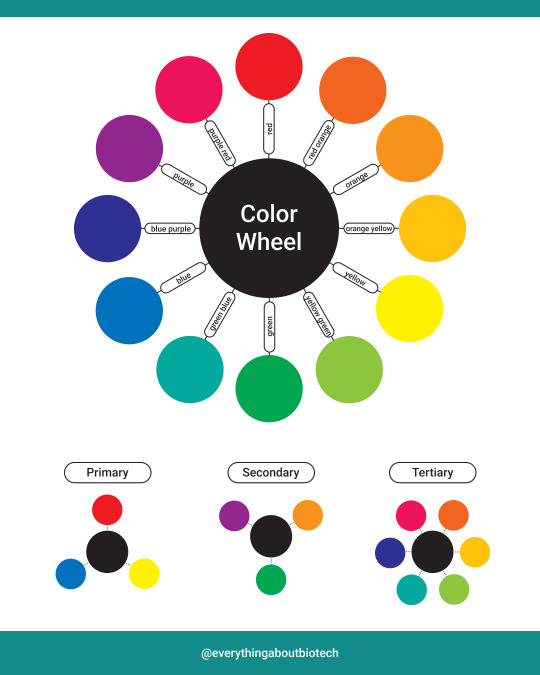
The color wheel is a circular diagram of colors arranged by their chromatic relationship. It is often used to understand color relationships and combinations.
The basic color wheel consists of primary, secondary, and tertiary colors.
Primary Colors:
These are the foundation of every other color.
In traditional color theory, there are three primary colors: red, blue, and yellow.
All other colors are created by mixing these primary colors together.
Secondary Colors:
These colors result from mixing two primary colors.
The three secondary colors are green (blue + yellow), orange (red + yellow), and purple (red + blue).
Tertiary Colors:
These are created by mixing a primary color with a neighboring secondary color.
The six tertiary colors include red-orange, yellow-orange, yellow-green, blue-green, blue-purple, and red-purple.
👉Follow @everythingaboutbiotech for useful posts.
#scicomm#sciencedaily#science#ColorWheel#ColorTheory#PalettePerfection#ArtistsOfInstagram#CreativeColors#ColorHarmony#VibrantPalette#ArtisticExpression#ColorInspiration#HueJunkie
3 notes
·
View notes
Text
I read this article a while back and ever since then it feels like I'm scrambling to clear lines every other night.
#ptsd#tetris#coping mechanism#mental ill health#it's more effective if played soon after the event#but i'll try anything#science#sciencedaily#mental health
1 note
·
View note
Text
🟡🟡 Everything Is a Computation: The Book that will Redefine Your View about Yourself and the Universe 🟡🟡 by ✍AFOUGHAL MOHAMED

⭐⭐⭐⭐⭐
✓ From a #scientific point of view, the #book seeks to dive as deep as possible into #existence, as it deals with many #metaphysical #phenomena such as #fate, #death, the #soul of the #universe, and the #Creator… It also explains the #abilities and #skills that #transcend #human sensory limits, such as the #law_of_attraction and #telepathy. All this is interpreted according to scientific #evidence and #mathematical methods that are profoundly logical
"Everything is a Computation"
Available on #amazon #Kindle & #paperback
#EverythingIsAComputation
#EverythingIsAComputation#kindlebargain#kindle#amazon#kindlebooks#amazon kindle#amazonkindle#amazonbook#bookstagram#book#books#books & libraries#scientific#researchers#solution#sciencedaily#scientists
0 notes
Text
New tech aims to drive down costs of hydrogen fuel -- ScienceDaily
New tech aims to drive down costs of hydrogen fuel — ScienceDaily
Researchers from North Carolina State University have developed a new technique for extracting hydrogen gas from liquid carriers which is faster, less expensive and more energy efficient than previous approaches.
“Hydrogen is widely viewed as a sustainable energy source for transportation, but there are some technical obstacles that need to be overcome before it can be viewed as a practical…

View On WordPress
#aims#Alternative Fuels; Nature of Water; Energy and Resources; Fuel Cells; Energy and the Environment; Renewable Energy; Sustainability; Hazardou#costs#Drive#fuel#hydrogen#ScienceDaily#Tech
9 notes
·
View notes
Text

Each year approximately 300,000 people have their appendix removed in the U.S.
#factoftheday #learning #education #til #funfact #medicine #medicalscience #funfacts #humanbody #facts #humanbodyfacts #todayilearned #factsdaily #knowledge #todayilearnedthat #lessonoftheday #scienceisfun #coolthings #discovery #learn #sciencedaily #staycurious #sciencelover #sciencefacts #sciencelovers #science #sciences
#sciencedaily#science news#sciences#science#medicine#medical science#human body#til#todayilearnedthat#todayilearned#today i learned#fun facts#facts#sciencefacts
0 notes